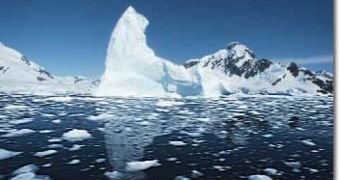People all over the world mourn over the ice loss of the northern planetary pole. But recent research indicated that this might actually be a good thing in some ways, since it leaves more room for phytoplankton to expand. This, in turn, produces chlorophyll, which helps assimilate sun energy and absorbs atmospheric CO2.
Theoretically, in the long run, this could mean lowering the level of carbon dioxide in the atmosphere and reducing the greenhouse effect. But the two different research teams that advanced the hypothesis ended up stating that this is unlikely, as phytoplankton can't possibly put up with the immense level of CO2 that people produce.
Still, small is good. Together with his team, biological oceanographer Kevin Arrigo from Stanford University analyzed data obtained via satellite between 1998 and 2007 in order to observe changes in sea ice quantities, sea surface temperature and phytoplankton growth. The results indicated that in some regions the phytoplankton productivity boosted more than three times after ice melted.
But even if Arctic ice melted completely and phytoplankton maintained its productivity, Arrigo's team deduced that the new "carbon sink" would only assimilate 160 million more tonnes of carbon per year, which, "Given the current rate of human emissions, that would only account for 0.7% of total annual emissions," as Arrigo claims.
If this is going to work, phytoplankton productivity needs to rise, but this is also improbable. Arrigo explained to New Scientist that "The Arctic has relatively low nutrients in surface waters, so once they are all used up production will not increase any further." Perhaps more nutrients from the seabed would help with this. Some controversial studies indicate that a potential aid in this respect might come from increasing winds and more storms over the Arctic. The way ice melting and phytoplankton expansion may affect the whole food chain remains to be analyzed.

 14 DAY TRIAL //
14 DAY TRIAL //